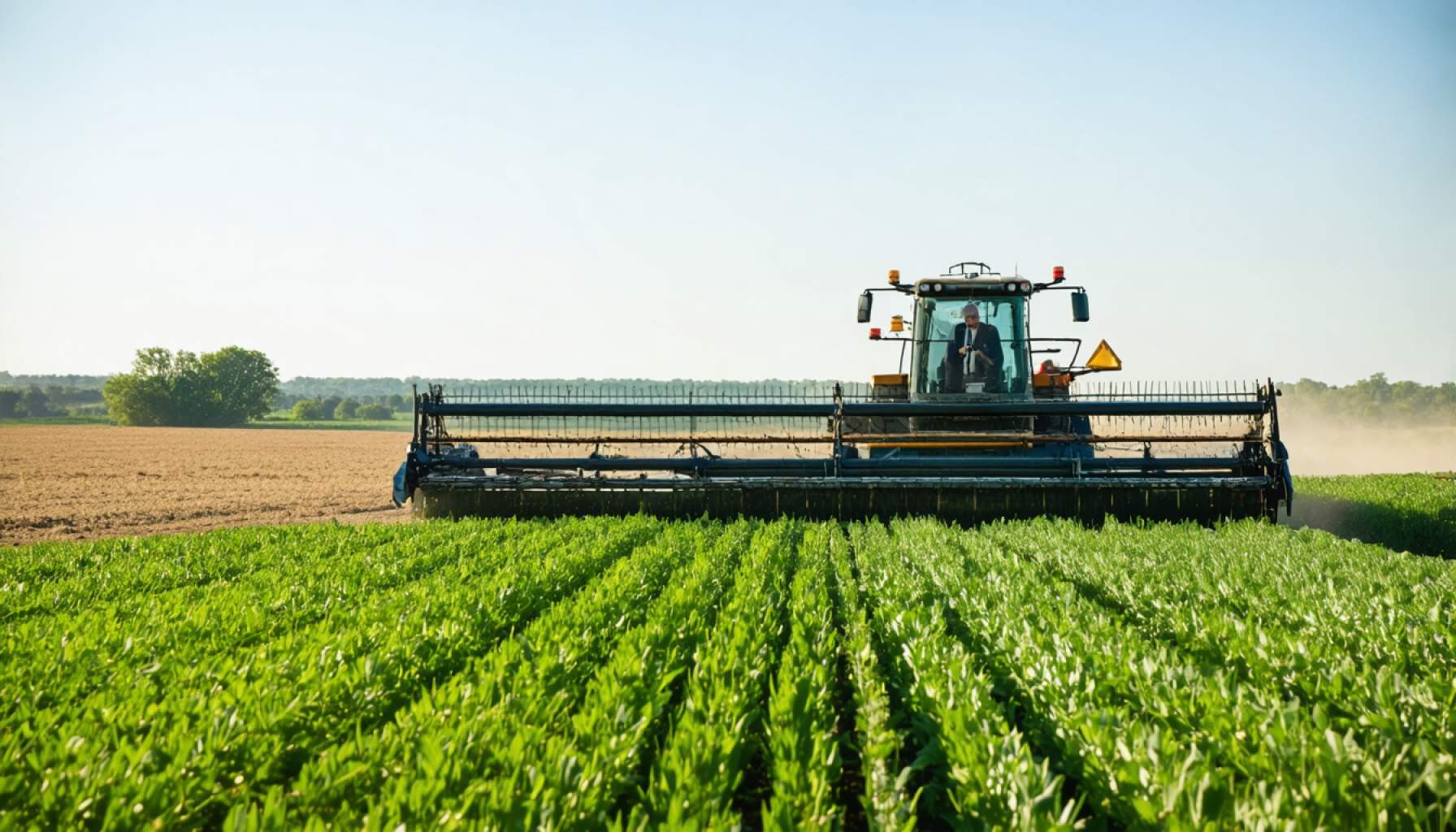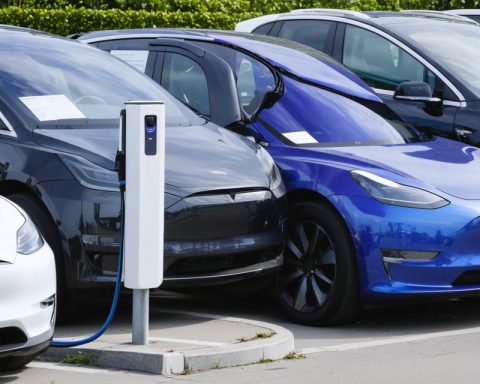- The USDA’s decision to require grant alignment with fossil fuel priorities disrupts renewable energy projects for many farmers, despite previous assurances of support.
- Farmers like Laura Beth Resnick and Andy Petran face financial uncertainty as their expected grants for solar energy projects remain frozen.
- The policy shift under the Trump administration is perceived as prioritizing oil and gas, sparking feelings of betrayal among those seeking sustainable solutions.
- The change in grant conditions introduces bureaucratic challenges, with recipients given only 30 days to align projects with new energy agendas.
- The controversy reveals a deeper issue of trust between the government and farmers, highlighting the need for consistent support for renewable initiatives.
- The broader conflict ties into halted funds from President Biden’s Inflation Reduction Act, impacting the USDA’s Rural Energy for America Program.
- This situation underscores the disconnect between policy decisions and the on-the-ground reality faced by farmers aiming to reduce their carbon footprint.
A vibrant sunrise over Maryland’s rolling fields paints a picture of hope and promise—a promise that feels broken for farmers like Laura Beth Resnick. Her heart skips not with the season’s bloom but the pressure of a $36,000 investment in solar panels, waiting for a grant that seems as elusive as mist. Resnick, once confident in the U.S. Department of Agriculture’s grant assurances, now finds herself entangled in a legal battle against the Trump administration’s pivot towards fossil fuels.
The USDA has announced a controversial move: it will only release frozen grant funds if applicants align their projects with President Trump’s energy priorities. This decision has sown seeds of doubt among thousands of grant recipients who, like Resnick, embarked on renewable energy projects, anticipating financial support that now feels like a mirage. Many are from regions that boldly supported Trump, underscoring a poignant irony as their renewable ambitions stall amid political directives that favor oil and gas.
Andy Petran, a strawberry farmer in Minnesota, echoes this sentiment of betrayal. With plans drawn and dreams banked on solar energy’s sustainable promise, Petran finds his $39,625 grant hanging in uncertainty. The solar project meant reduced energy costs and new income by feeding power back into the grid. Now, his vision dims, shadowed by the administration’s energy policy shift.
Despite the political rhetoric promising to make farmers whole, the reality is a bureaucratic knot of deadlines and policy rewrites. Grant recipients have just 30 days to reconjure their projects to satisfy a fossil-fueled agenda—an impossible task for those who simply want to harvest sunlight.
Yet, amidst frustrated whispers, a deeper issue emerges: trust. The USDA’s change in course feels not simply like a financial blockade but a breach of the implicit contract between government and its citizens.
The crux of the conflict ties back to the broader legislative landscape. Trump’s executive order has paused billions earmarked for renewable energy under President Biden’s Inflation Reduction Act, a law that had expanded the USDA’s Rural Energy for America Program—designed to reduce farmers’ carbon footprints.
As lawsuits unfurl and debate rages, this saga of halted grants highlights a disconnect between political machinations and the grassroots needs of American farmers. These farmers aren’t just stepping stones in an energy policy debate; they are pillars of communities, providers of sustenance, and, increasingly, guardians of the environment.
To sow sustainability, farmers need not just promises but actions rooted in consistency and support. The picture that unfolds isn’t just about energy choices; it’s about restoring faith and providing fertile ground where rural America can thrive on renewable potential.
Stalled Renewable Energy Grants: Navigating the Challenges and Opportunities for Farmers
Introduction
The renewable energy landscape for America’s farmers faces a turbulent wave of uncertainty. Farmers like Laura Beth Resnick in Maryland and Andy Petran in Minnesota are grappling with the challenges posed by sudden policy shifts under the Trump administration, placing their investments and future sustainability at risk. As renewable energy initiatives clash with fossil fuel policies, farmers find themselves in a complex legal and financial predicament. This article explores the implications, offers insights into navigating the challenges, and provides actionable recommendations for farmers committed to renewable energy.
Challenges and Implications
1. Policy Shifts and Legal Challenges
The abrupt change in policy requiring grants to align with fossil fuel priorities underlines a significant shift away from renewable energy, igniting legal battles. Farmers feel betrayed as federal promises of support evaporate. This has created an urgent need to address the root causes of policy volatility that undermine renewable projects.
2. Financial Pressures on Farmers
Investments in renewable energy, such as Resnick’s $36,000 in solar panels and Petran’s $39,625, are substantial commitments. The withholding of promised grants due to policy changes represents a financial strain. Farmers might experience increased debt levels while being unable to complete or benefit from their sustainability projects, potentially threatening their economic viability.
3. Breach of Trust in Government Support
The decision to withhold funds has damaged trust between farmers and the government. There’s a need for greater transparency and consistency in policies ensuring reliable support for renewable initiatives, which are vital for farmers’ long-term prospects and environmental stewardship.
How to Navigate the Current Landscape
1. Explore Alternative Funding Sources
Farmers should explore other funding options, such as state-level grants or private funding opportunities, to continue their renewable energy projects. Engaging with local government representatives and organizations that support green initiatives can provide alternative pathways and advocacy.
2. Legal Strategies and Advocacy
Engaging in or supporting legal actions challenging these policy changes can also be a way forward. Collaboration with advocacy groups and leveraging media attention can apply pressure on policymakers to reconsider or adjust current stances, highlighting the farmers’ plights and the broader impact on sustainable practices.
3. Community Collaboration and Networking
Building networks and coalitions with other affected farmers can strengthen collective action, sharing resources and strategies to mitigate individual risks. They can also pool resources to approach sustainability from a community perspective, reinforcing their position and bargaining power.
Current Market Trends and Future Predictions
– Renewable Energy Demand
Despite current challenges, the global trend towards renewable energy continues to grow, driven by environmental concerns and technological advancements. Farmers could see expanded opportunities in the long term, as public, and potentially governmental, sentiment returns to favor renewables.
– Technological Advances
Advances in renewable technology may lead to cost reductions, making these solutions more accessible for farmers without heavy reliance on grants. Innovations in solar panel efficiency and wind technology are expected to ease entry barriers gradually.
Actionable Recommendations
– Educate on Policy Changes
Farmers must stay informed about policy changes and potential impacts on their projects. Regular updates from agricultural bodies or renewable energy associations can provide valuable guidance.
– Diversify Energy Projects
By diversifying project portfolios, including exploring wind, bioenergy, and improved energy efficiency methods, farmers can reduce reliance on solar grants alone and improve sustainability.
– Leverage Support from Renewable Organizations
Engaging with organizations such as the American Solar Energy Society and pursuing certification programs like LEED for their farms can enhance credibility and attract support.
Conclusion
The tension between policy and practice highlights the need for sustainable support frameworks that empower farmers. While challenges persist, strategic adaptations and the exploration of diverse funding and community strategies can help farmers sustain their renewable energy initiatives. By advocating consistently and leveraging future technological trends, the farming community can overcome current challenges and continue to play a vital role in the transition toward a more sustainable future. For more information on renewable energy strategies for farmers, visit the USDA website for resources and updates.














